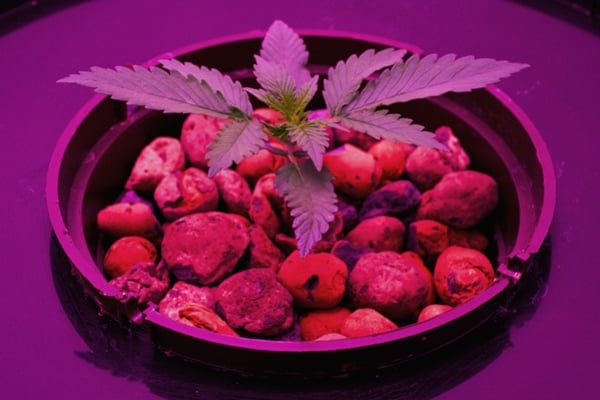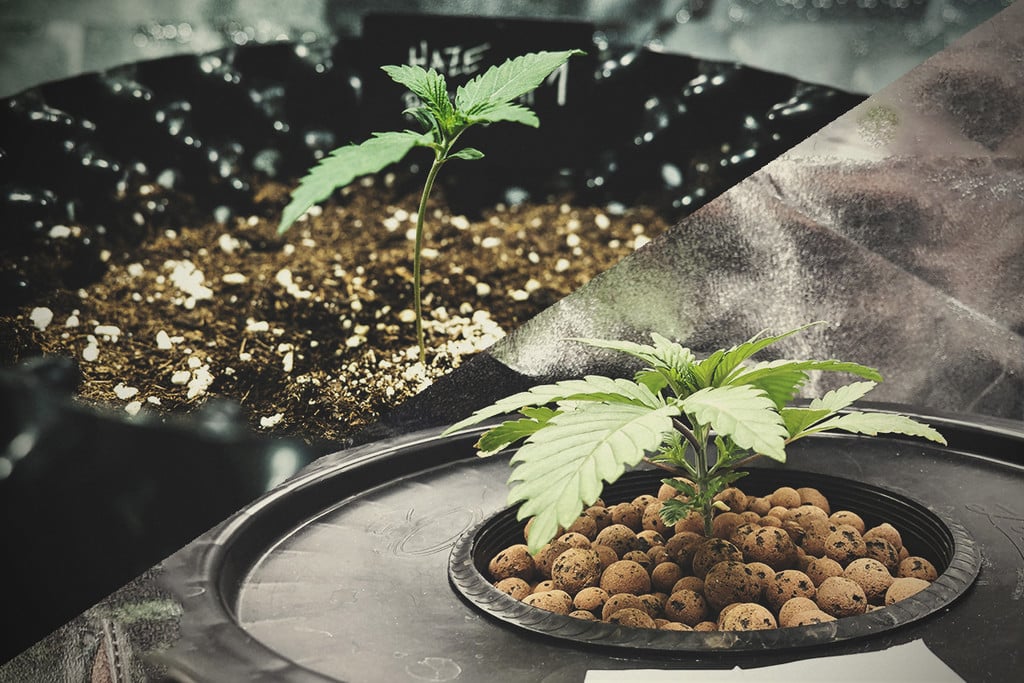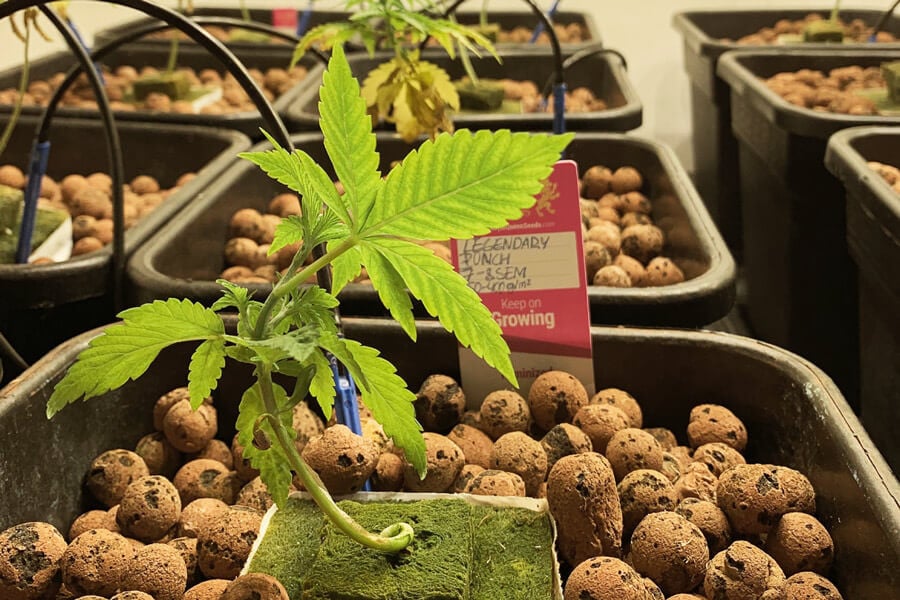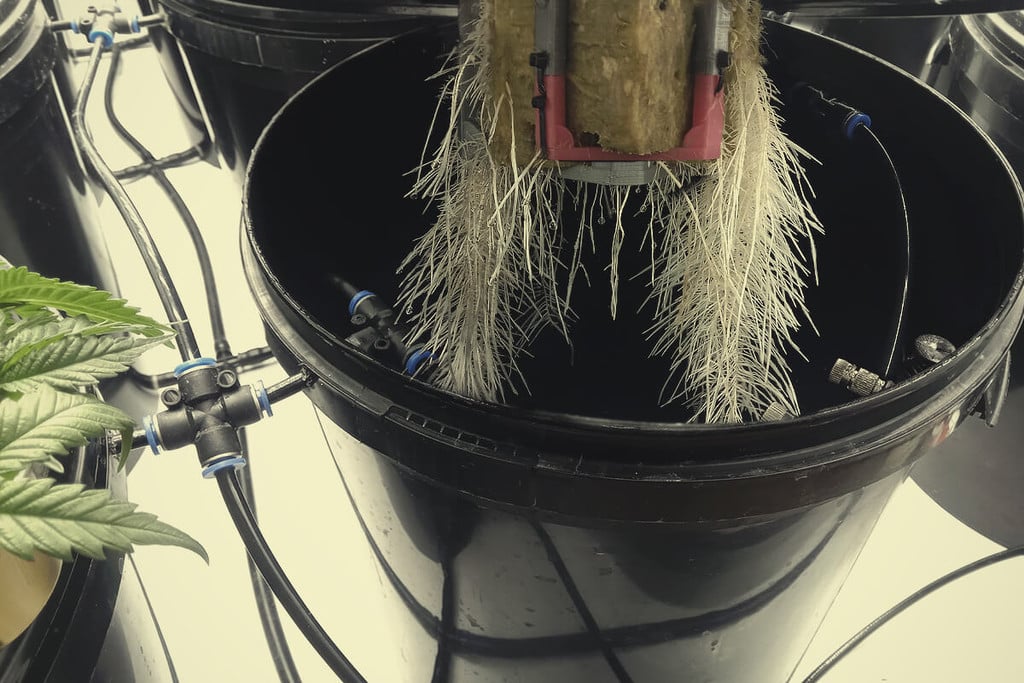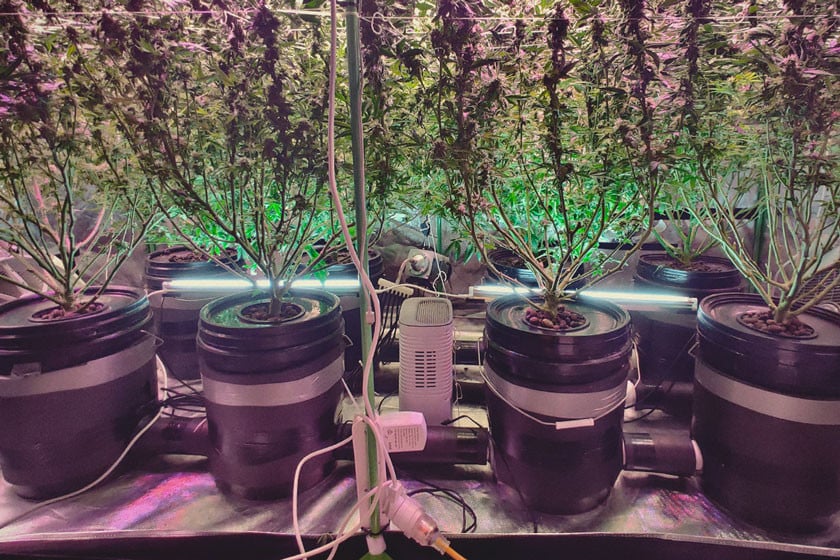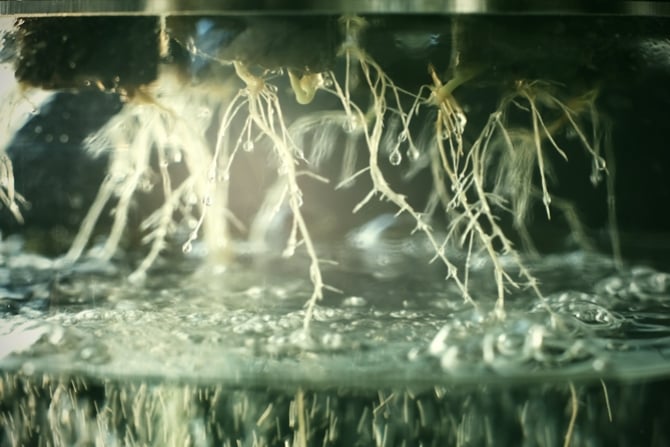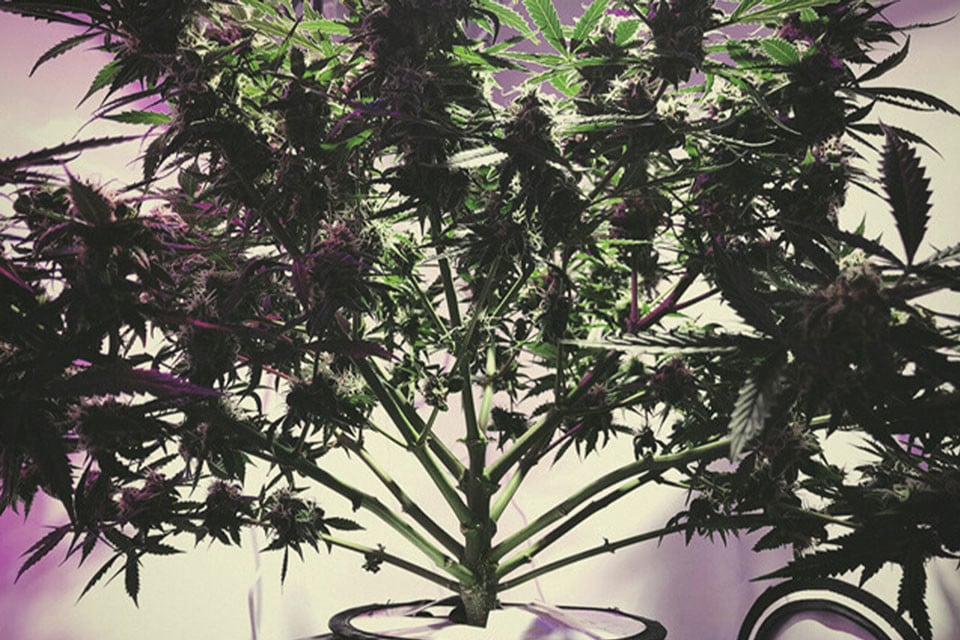.
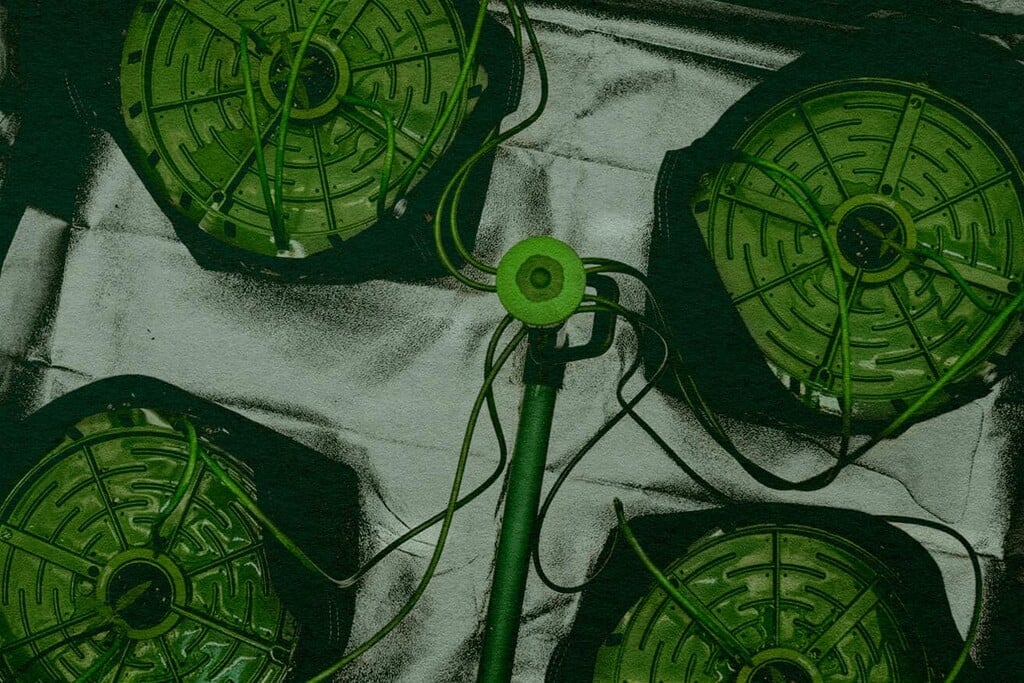
How to Set Up an Automated Drip Irrigation Watering System for Cannabis
Drip irrigation might seem expensive or complex to set up, but it doesn't have to be. In this article, we'll teach you two ways to instal a drip irrigation system to help you cut down on physical labour and grow bigger, healthier cannabis plants.
Learn how to set up an indoor and outdoor drip irrigation system.
Contents:
With so much hype and info online about grow lights and nutrients, it’s easy for growers to forget about other aspects of their grow, like irrigation. However, without a healthy, regular watering schedule, your cannabis plants are never going to reach their full potential, regardless of how well you train them or how much money you spend on fertiliser.
In this article, we’ll walk you through drip irrigation, one of the simplest and most effective ways to automate the watering and feeding of your plants. With the right drip irrigation system in place, your plants will grow fast and healthy, without you needing to lift a finger to water or feed them.
Automatic Watering System for Grow Tents
Out of all of the inputs that cannabis needs, watering requires the greatest balancing act. Growers with a small setup and time to spare can apply water by hand on an as-needed basis. But there are easier and more efficient ways to keep your crop hydrated.
Automatic watering systems are ideal for growers with busy schedules. They also come in handy when you need to leave your plants unattended for several days at a time. Automated drip irrigation systems are made up of pipes, a water pump, a reservoir, and a timer. Together, these pieces of kit deliver the right amount of water at the right time, and no human intervention is required past the point of installation. Rather than flooding the growing medium and thereby increasing the chances of root rot, drip irrigation, as the name implies, delivers the right amount of water slowly over time. If you’re busy, or simply want to take a more hands-off approach to growing, this technique offers the perfect cannabis watering system.
How Does Drip Irrigation for Cannabis Work?
Drip irrigation, as the name suggests, is an irrigation system that slowly drip-feeds/waters your plants. It’s a low-pressure and low-volume irrigation technique that automatically delivers nutrients and water directly to a plant’s root zone in a very regulated and precise manner.
This seemingly advanced irrigation technique dates back to ancient China; the Fan Shengzhi shu, a Chinese agricultural text dating back to the 1st century BCE, describes a type of drip irrigation using buried clay pots filled with water.
Today, drip irrigation systems can vary greatly in both price and build quality/sophistication. Some of the most popular styles of drip irrigation include:
1. Drip Line Irrigation
Drip line irrigation uses lines of tubing to deliver water from your faucets to your garden. These systems usually come with a pressure regulator (to lower the pressure of your water and ensure a slow, steady flow of water), a water filter, and a timer to allow you to automate irrigation.
2. Bottle Drip Irrigation
Bottle drip irrigation is a very simple yet perfectly effective approach to drip irrigation. It uses plastic bottles placed around your garden, close to your plants’ roots, to deliver a slow, steady flow of water. Rather than investing in a drip line system, you can build your own DIY bottle drip irrigation system for next to nothing (instructions below).
Drip Irrigation in Soil vs Hydroponics
The drip irrigation system described above is a simple and functional system that most people can instal in their homes. It does, however, have some restrictions and shortcomings, especially for hydro growers, that are important to consider.
Because the system above connects directly to a faucet, it does not allow you to treat, condition, or balance the water from your tap in order to better suit the needs of your plants. This means you won't be able to test or amend the pH of your water, nor measure/treat the amount of chlorine in it, both of which can, in turn, affect nutrient uptake, root health, and possibly even degrade the quality of your soil over time (chlorine kills beneficial bacteria and microbial lifeforms in living soil that help your plants feed and stay protected against pests and pathogens).
While the system we've described is a great starting point for amateur growers, if you're an experienced soil grower who needs more control over the quality of water you're using, we highly recommend using a reservoir-based system instead. Using a reservoir/bin/tote to house your water lets you balance the water's pH as well as condition its temperature, chlorination, and nutrient levels all before it gets pumped out to your plants. If you're growing hydroponically, using a reservoir system is a must, as it's the only way to add nutrients directly to the water to feed your plants.
Finally, using a reservoir-based system also provides more peace of mind. If you connect your drip irrigation system directly to your faucet and one of the system's fittings fails, you could experience catastrophic floods that wouldn't take place when working with a reservoir with limited water capacity and controlled by an electronic timer.
Does Drip Irrigation Save Water?
Yes, drip irrigation can save a lot of water, especially when compared to hand-watering, flood irrigation, or spray/sprinkler systems. Because it delivers water in a very controlled manner directly to the roots of your plants, it greatly reduces the loss of water from evaporation. Also, the flow and direction of water in a drip system isn’t affected by wind as it is in sprinkler systems, meaning it can dramatically improve watering efficiency outdoors.
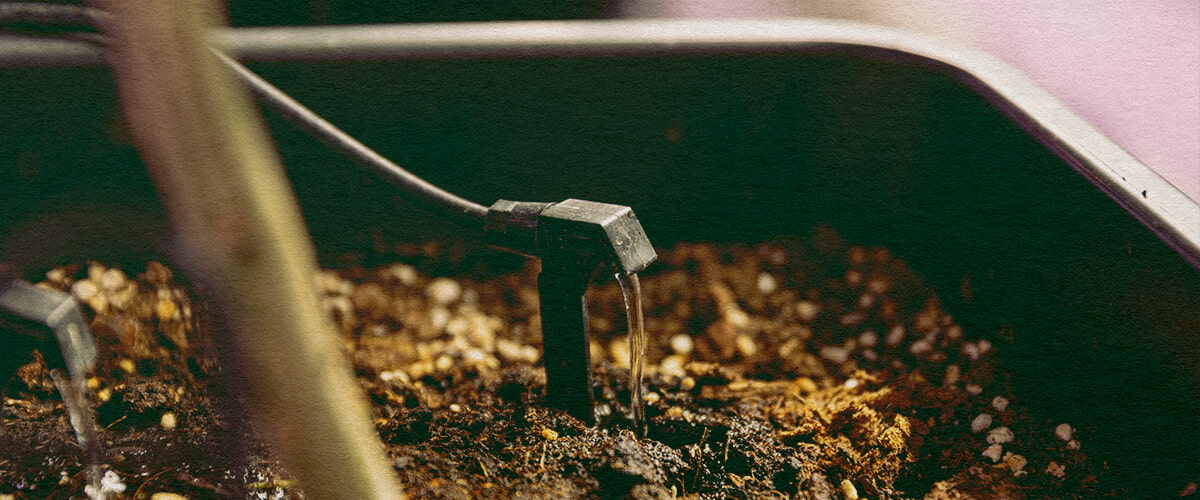
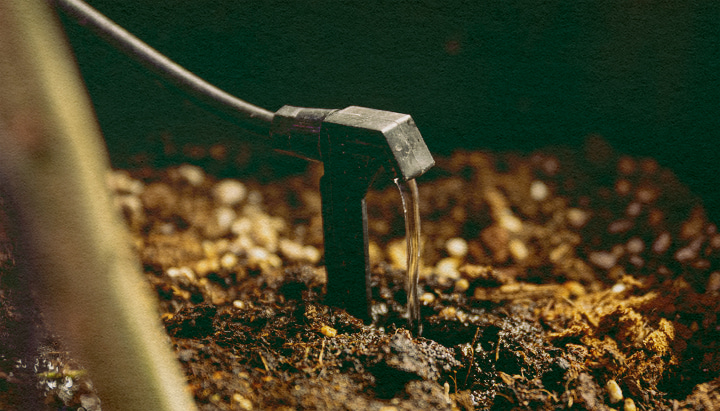
Advantages of Drip Irrigation
Besides saving water, there are many other benefits to drip irrigation:
- Reduced fertiliser loss8 Because drip irrigation delivers water and nutrients directly to a plant’s root zone, it minimises the waste of fertiliser leaching into areas of the soil where it cannot be absorbed.
- Reduced labour Installing a drip irrigation system is super simple and much less labour-intensive when compared to flood irrigation. Plus, drip irrigation also reduces the physical labour it takes to water and feed your plants, as it automates the process.
- Healthier roots Drip irrigation systems help optimise the humidity of the soil around your plants’ roots, even in large outdoor gardens or fields. This promotes the development of healthier roots, which is key to healthier plants.
- Slower soil erosion If you’re a sustainable outdoor grower, drip irrigation is vital to preserving the quality of your soil over time.
- Easier weeding The targeted nature of drip irrigation means it reduces the likelihood of weeds sprouting in your garden.
- Precise water distribution Drip irrigation ensures all your plants get the same amount of water, every time you water.
- Reduced disease and/or pest issues Drip irrigation waters and feeds your plants right at their root zone without wetting their foliage. This keeps your garden dry, helping to keep moisture-loving pests and pathogens at bay.
- Lower energy costs Because drip irrigation is a low-pressure system, it can usually be maintained using less energy.
Disadvantages of Drip Irrigation
Unfortunately, drip irrigation systems also have their drawbacks. First and foremost, they can be more expensive than other irrigation systems, meaning they may not be suited to growers with a limited budget.
Drip irrigation systems also leave a lot of room for error. Installing these systems properly requires a lot of knowledge about your plants, their medium, and the local environment (if you’re growing outdoors). Without this knowledge, you may incorrectly instal or run your system, which might ultimately do your plants more harm than good.
Inexperienced growers using subsurface irrigation systems for the first time, for example, may run into issues with over- or underwatering, which can lead to stunted growth, pest issues, and more.
Some other disadvantages of drip irrigation systems include:
- Salt build-up around the root zone Because drip irrigation systems minimise fertiliser leakage, they may facilitate the build-up of salt deposits around the root zone, especially if your fertilisers are highly concentrated.
- Clogging Drip irrigation systems are prone to clogging, especially if you run into problems with your water filter. Salts in your fertilisers can also build up in your system, causing it to clog.
- Plastic leakage The plastic components of drip systems naturally degrade over time, especially out in the sun. When they do, they may leak chemicals into the water, soil, and surrounding environment.
- Maintenance costs Regular maintenance is vital to keeping an irrigation system working properly over time. Hiring a professional to do so, or buying replacement parts and repairing the system yourself, may drive up the cost of your grow-op.

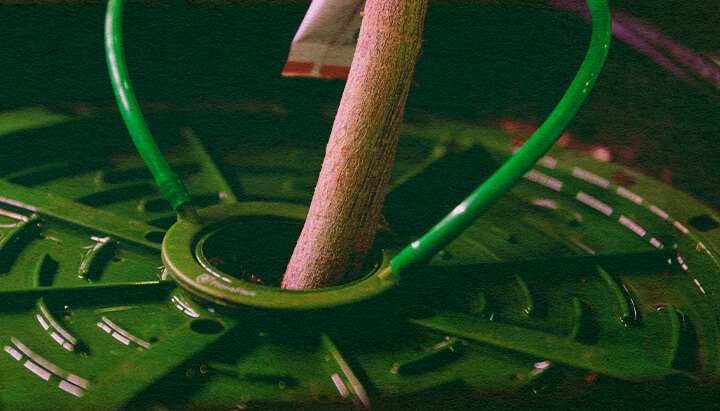
Building Your Own DIY Drip Irrigation System for Growing Cannabis
While professional drip irrigation can be expensive, you can easily craft a makeshift DIY drip system at home. Though there are many different ways to do this, we’ll share two of our favourites; a line irrigation system perfect for an indoor grow room, and an outdoor system made using plastic bottles.
How to Build an Indoor Line Drip Irrigation System
Below, you’ll find a list of materials and instructions for creating a simple line drip irrigation system using basic materials. In our experience, these line systems are the best option for indoor gardeners as they minimise the risk of water splashing up onto your plants, which can create an inviting environment for pests and plagues.
Materials
- A faucet close to your grow room: This will be the source of water for your system.
- Drip irrigation faucet adapter: This adapter includes a backflow preventer, mesh filter, 25 PSI pressure regulator, and a hose adapter. Rather than buying all these pieces separately, we highly recommend this adapter.
- ½” (1.27cm) watering line.
- Water drippers: These pressure compensating drippers are perfect for a DIY drip system.
- Tent stakes to hold the line in place over your pots.
- Tubing hole punch
- Line fittings (optional): This collection of T, cross, and corner fittings might come in handy when trying to run long lines through large grow rooms with multiple plants.
- Water pump: This piece of kit forces water from the reservoir, through the pipes, and into the growing medium.
- Timer control adaptor: Select a timer with an adaptor compatible with your water pump to automate the system.
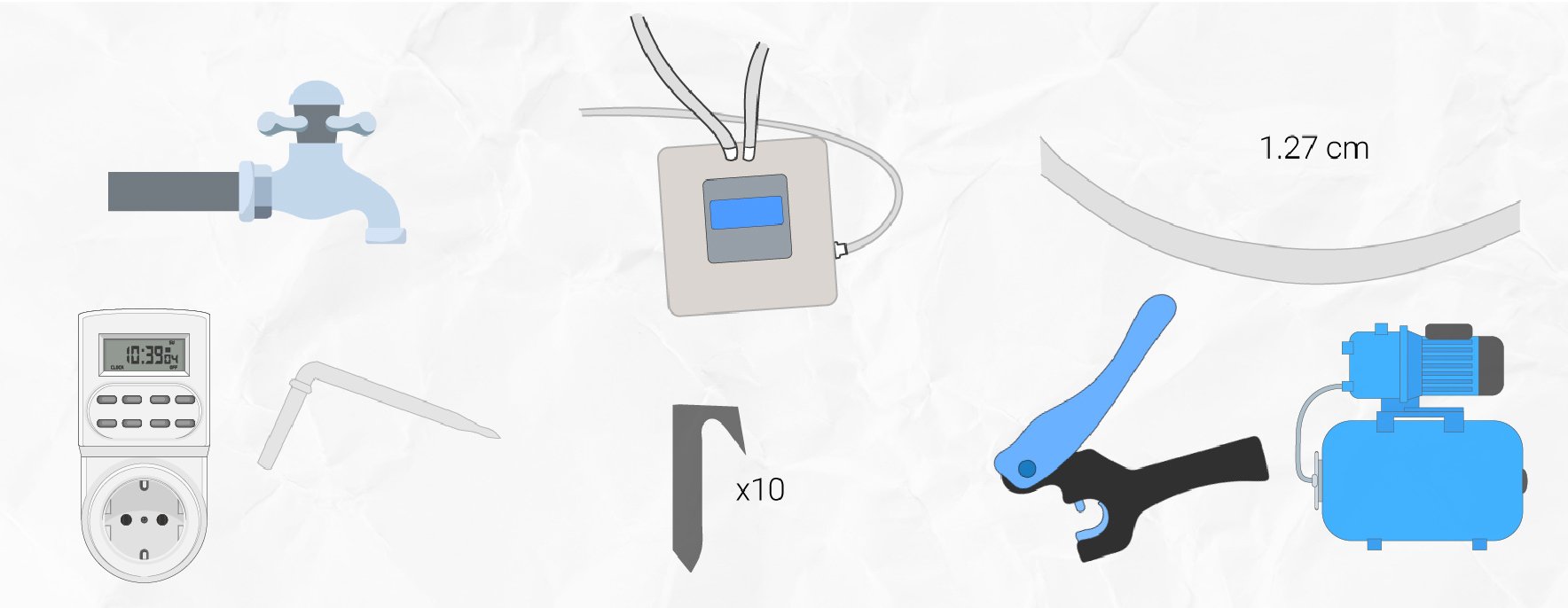
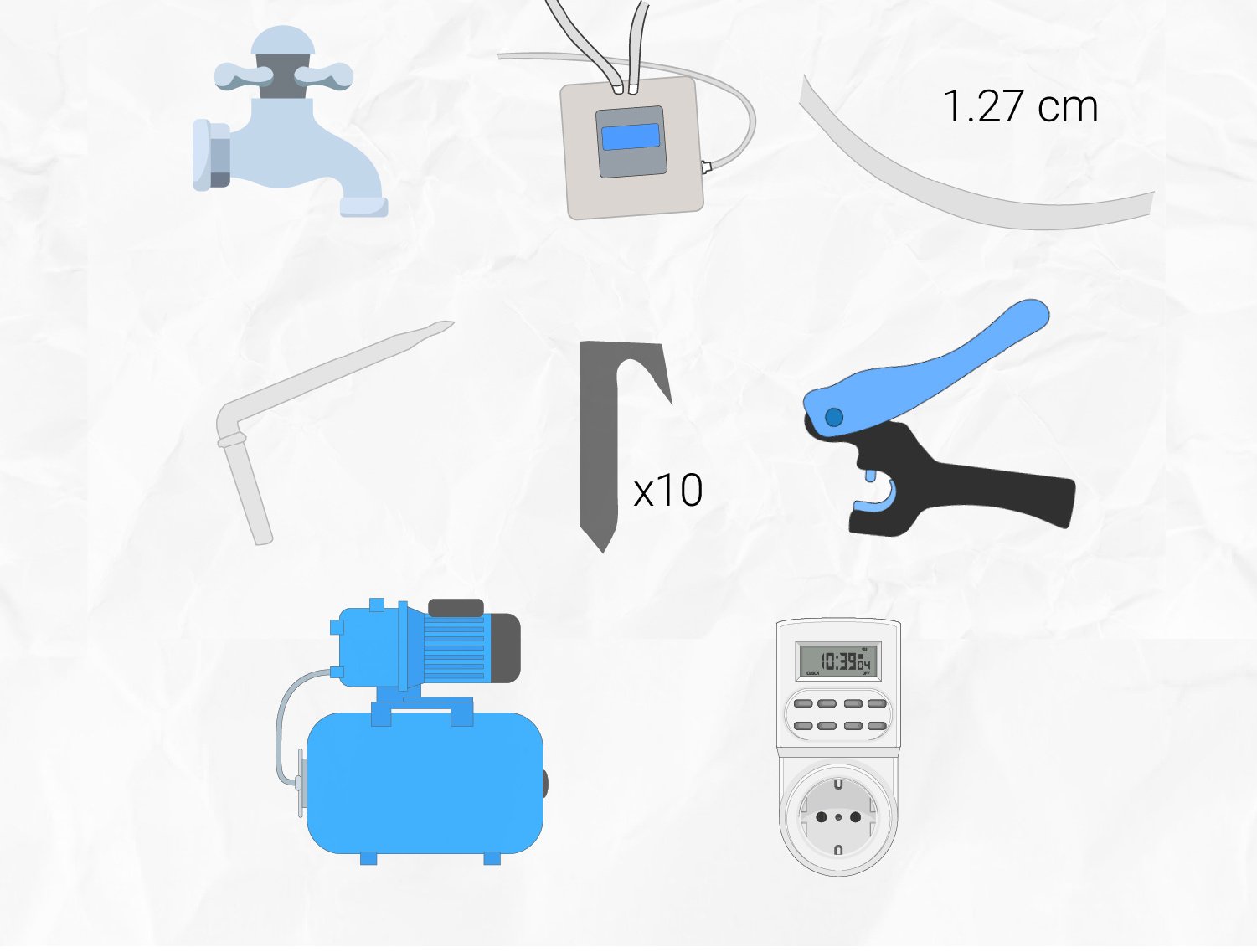
Method
1. Connect your adapter to your faucet, then connect your watering line to the adapter. Open the faucet to ensure the water flows properly through the adapter to the hose and doesn’t leak.
2. Take the line into your grow room and spend some time to visualise the best way to run it around.
3. Use the hole punch to make holes in your line where necessary. We recommend using at least 2–3 drippers for each plant, placed at equal distances around the pot.
4 .Install the drippers simply by pushing them into the holes in your line. Make sure the drippers don’t wet any of your plant’s foliage or main stem, as this can attract pests and pathogens into your grow room.
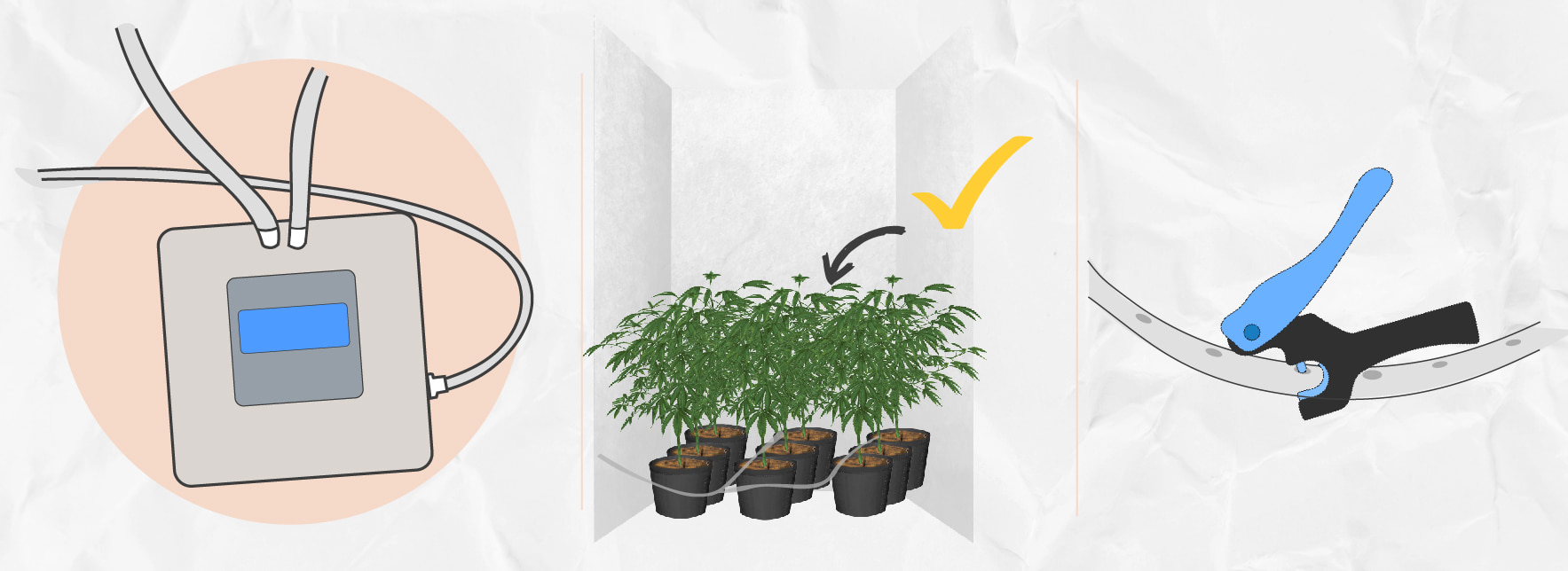
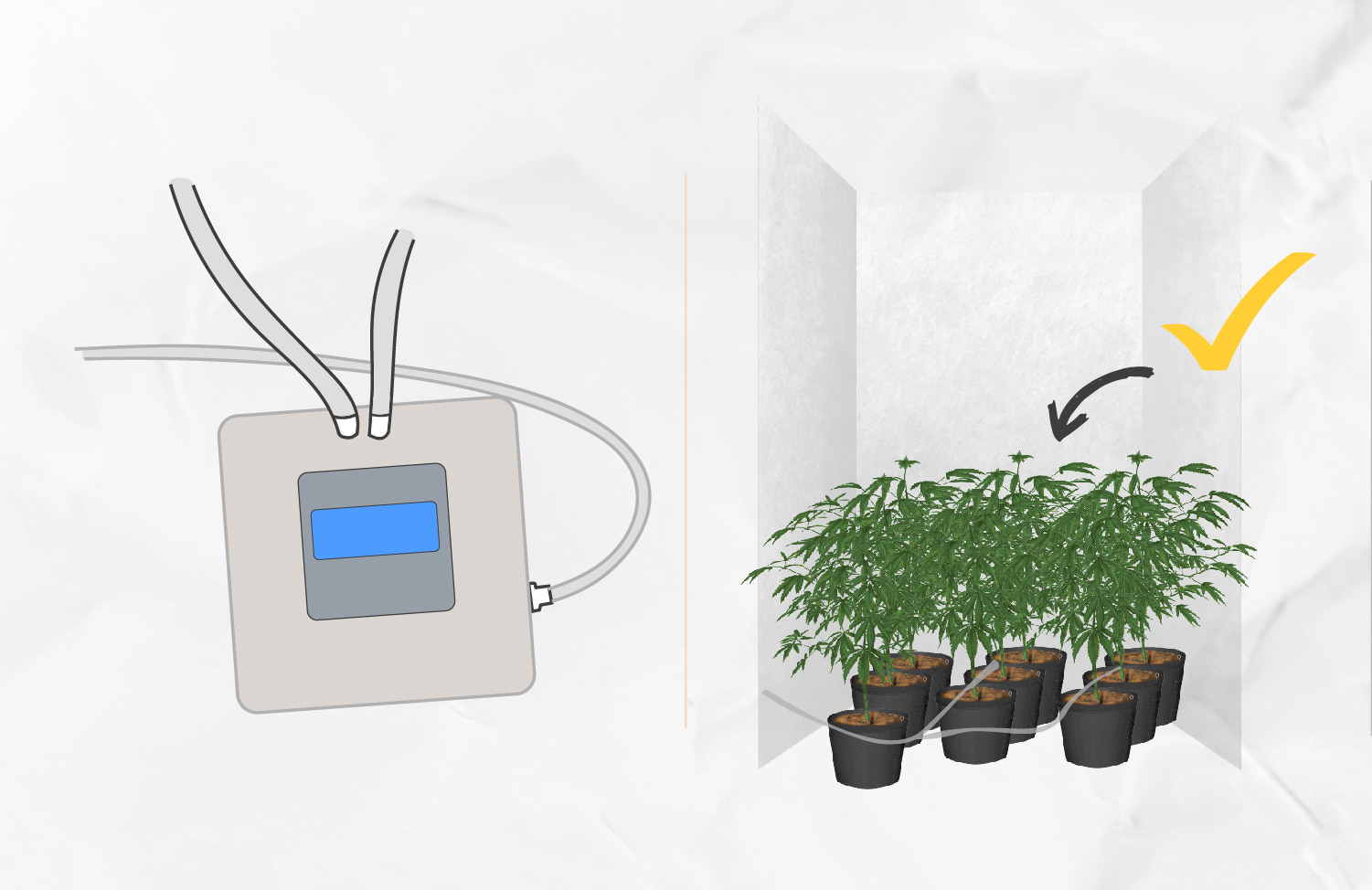
5. Use tent stakes to hold the line in place close to your plants’ topsoil.
6. Where necessary, use the T, cross, and corner fittings listed above to neatly run your line through your tent/room. To instal the fittings, simply cut your line where you want the fitting to go, and push it into or over the fitting. You may want to warm the line in hot water first to make this process a little easier.
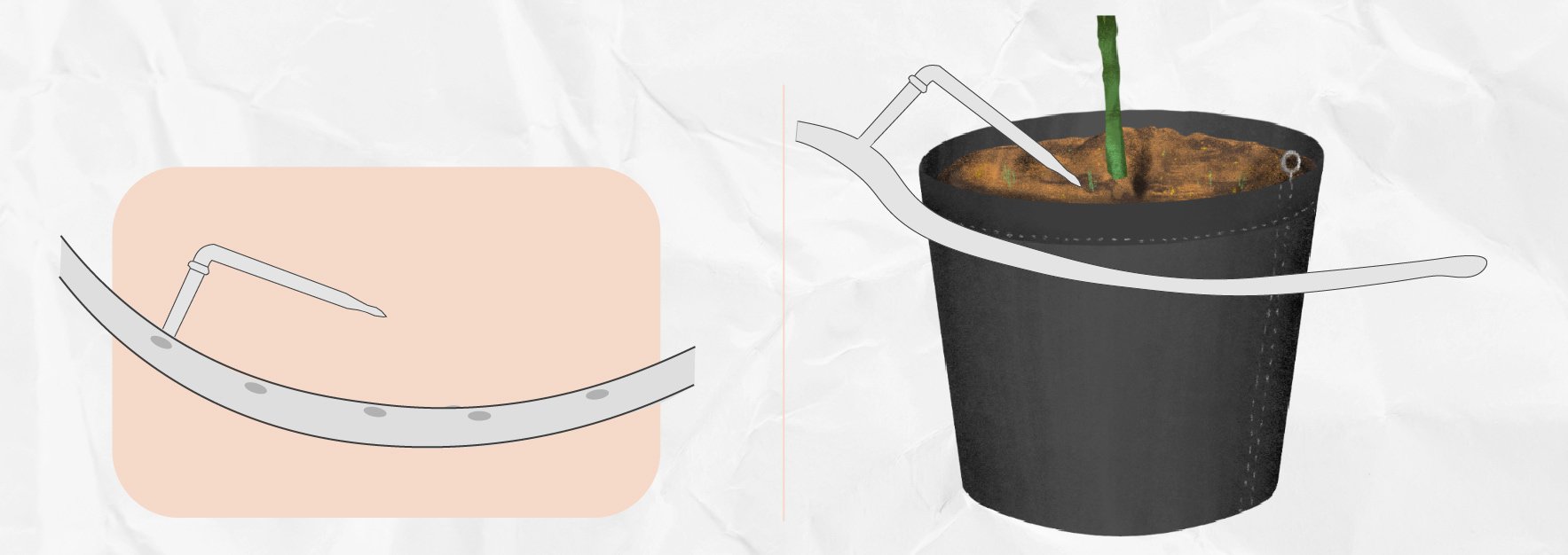
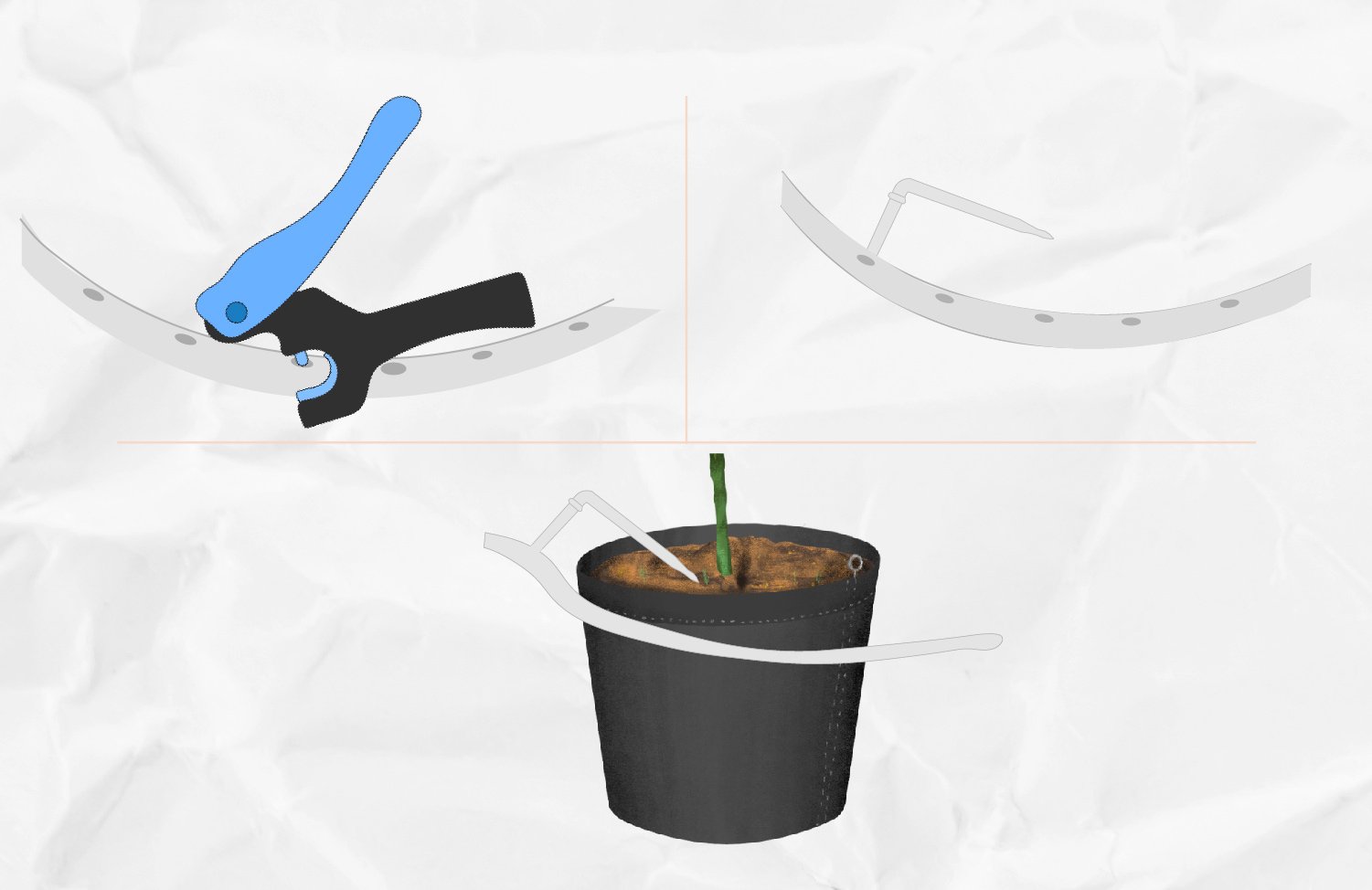
7. Once you’re finished running your line, cut it (if need be) and use an end plug to plug it.
8. Turn on your faucet and check your line. Each dripper should effectively drip water into your plant’s medium. Replace any drippers that spray or appear blocked.
9. Pon a prueba tu sistema de riego por goteo. Tras comprobar que las mangueras transportan y liberan el agua correctamente, tendrás que probar el sistema para asegurarte de que todo funciona sin problemas (especialmente antes de dejar las plantas solas durante largos periodos de tiempo). Configura el temporizador para que el sistema se encienda durante 5-10 minutos. Comprueba que la bomba de agua se encienda y se apague a la hora prevista. Mientras esté en marcha, vuelve a comprobar las mangueras para asegurarte de que no haya obstrucciones ni fugas, y de que los agujeros suministren la cantidad deseada de agua. Si todo parece estar en orden, ya tienes un sistema de riego por goteo para interior.
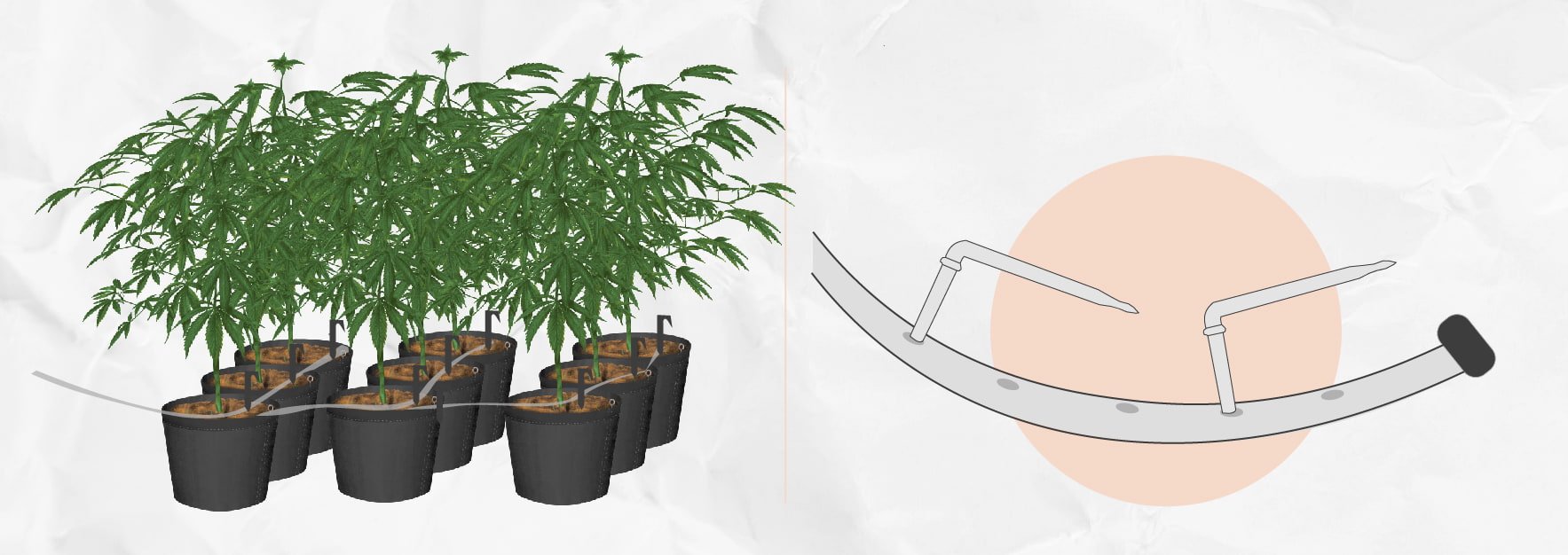
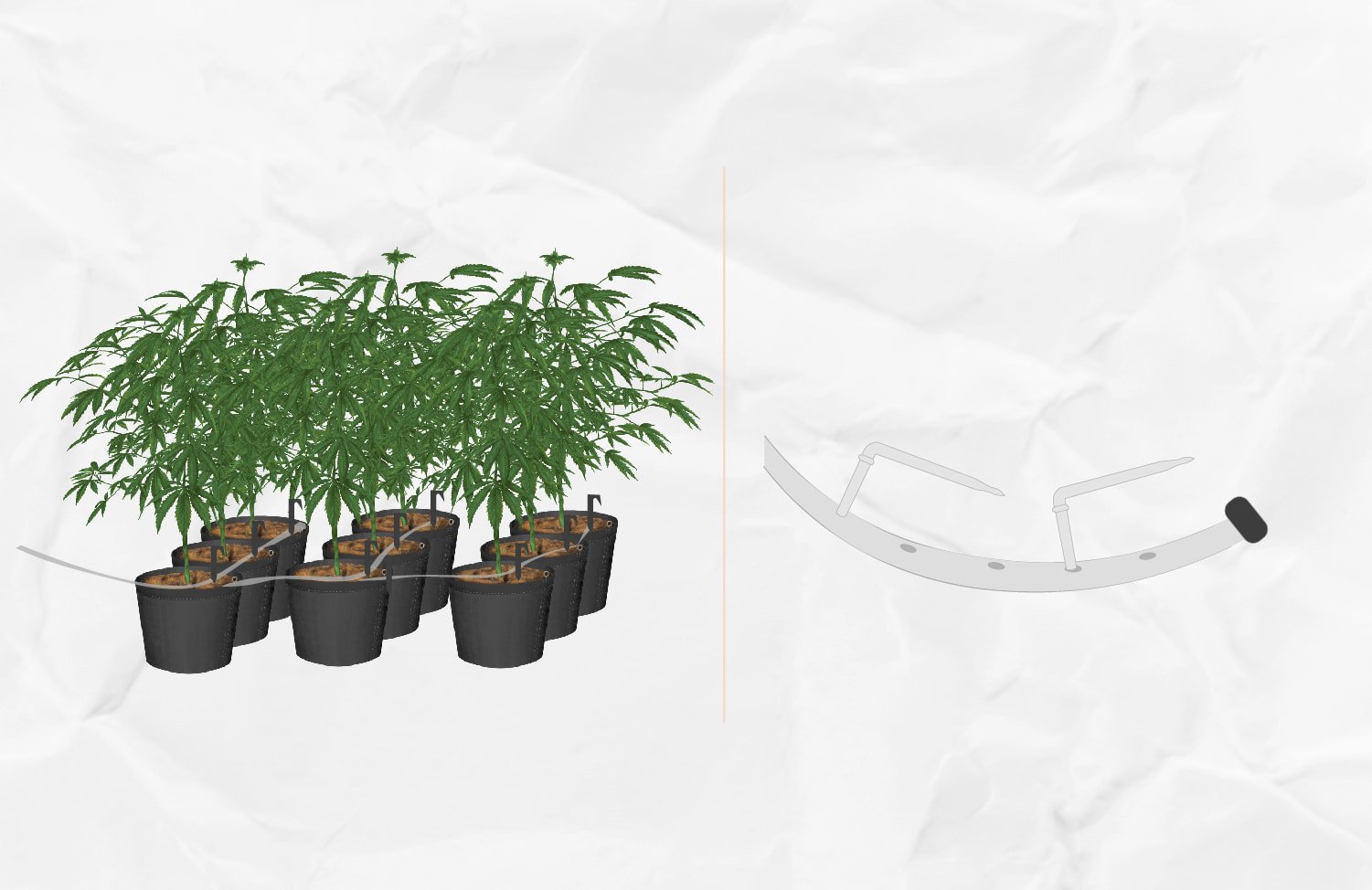
How to Build an Outdoor Bottle Drip Irrigation System
The following instructions are for a simple DIY drip irrigation system using hanging plastic bottles. While it might lack sophistication, this system is super easy to set up and gets the job done for next to no upfront investment in materials/equipment.
Materials
- 2l plastic bottles with bottle caps: You’ll need one bottle for each of your plants.
- Electric drill for drilling holes into the side of the bottles
- String to secure the hanging bottles above your plants
- Scissors or utility knife to cut the bottles
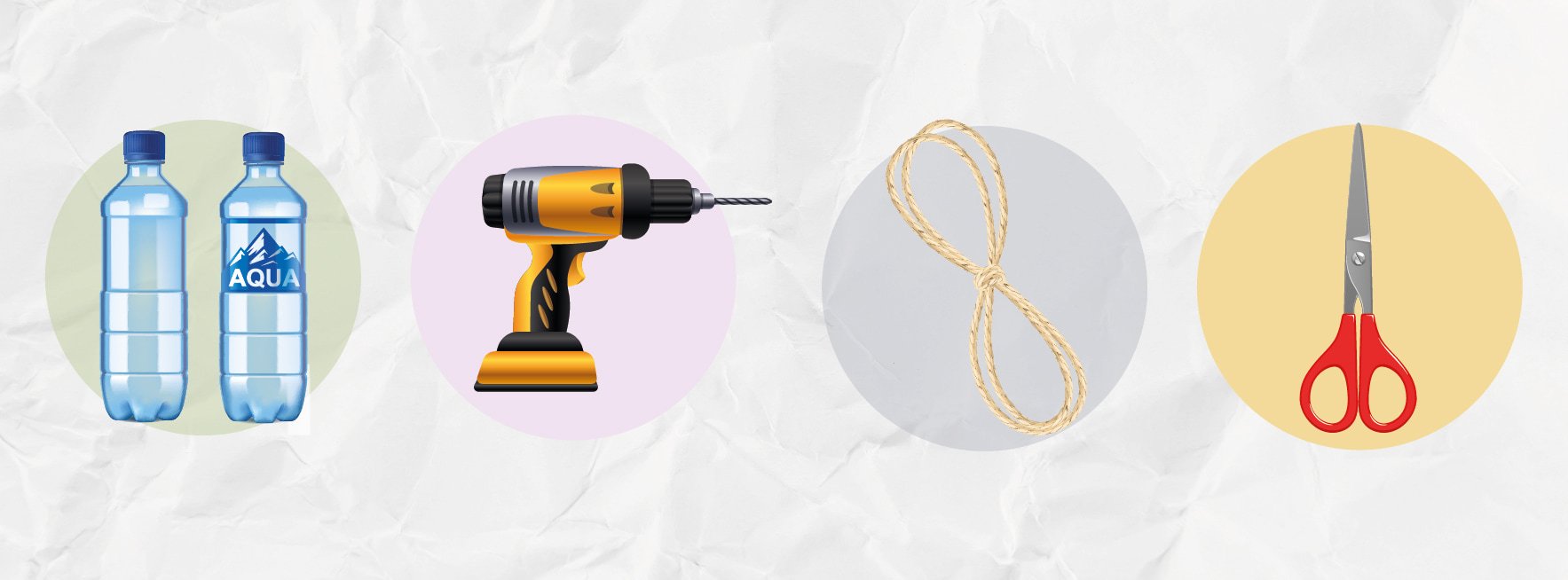
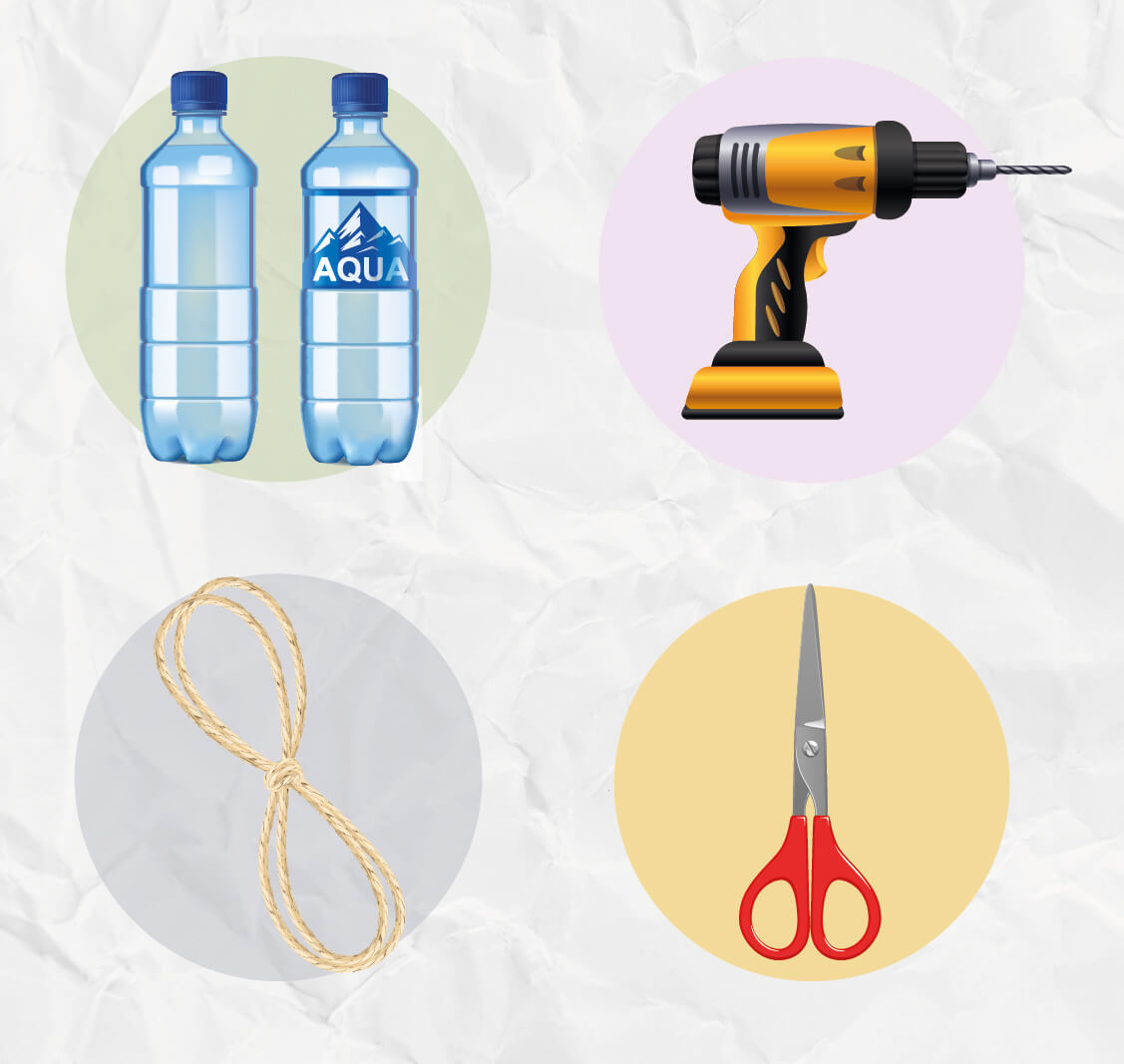
Method
- Cut the bottom off your bottles completely. Next, drill two holes into each side of the bottle, roughly 2cm down from where you made the cut.
- Run a piece of string from one hole to the other, creating a sling from which you can hang the bottles above your plants.
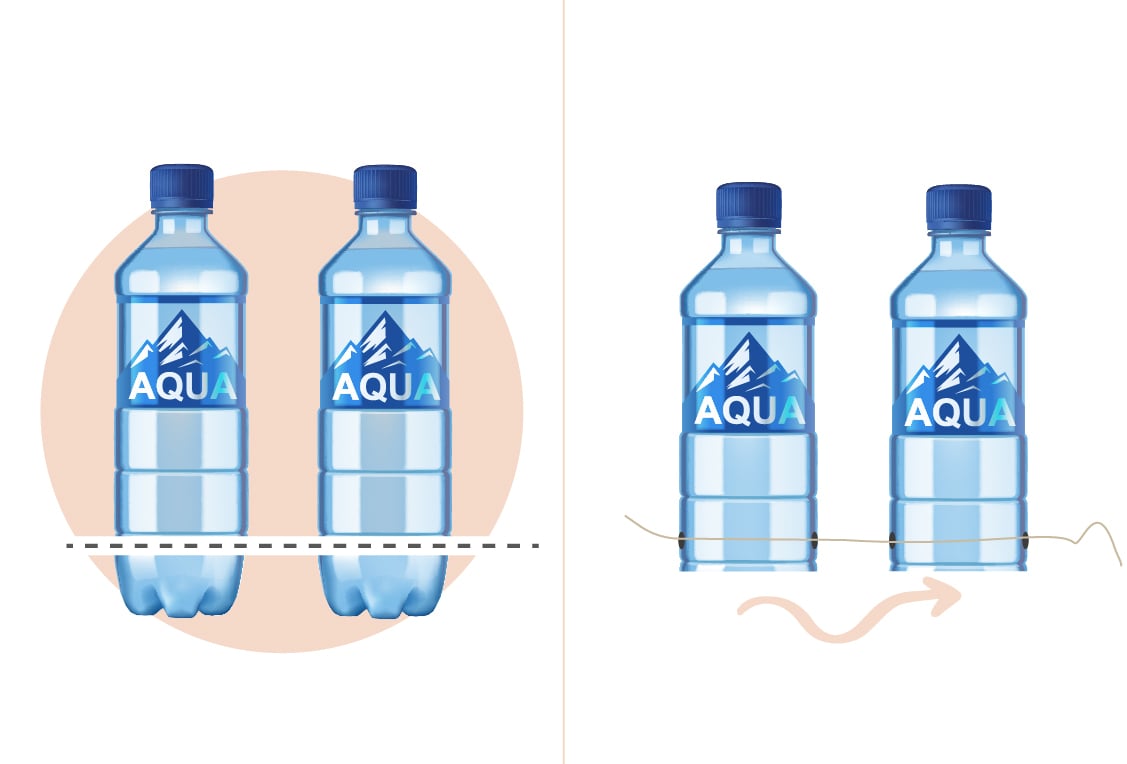
3. Screw the caps on each bottle, fill them with water, and hang them roughly 30–60cm from the top of your pots.
4. Gently unscrew the caps on your bottles to let the water slowly seep out. You may want to experiment with opening and closing the cap to find that sweet spot with a nice, slow, steady drip. Also, make sure your bottles are dripping roughly 5–10cm from the stem of your plants, and ensure they’re not wetting the stem or any foliage to avoid problems with pests and plagues.
5. Refill your bottles as needed.
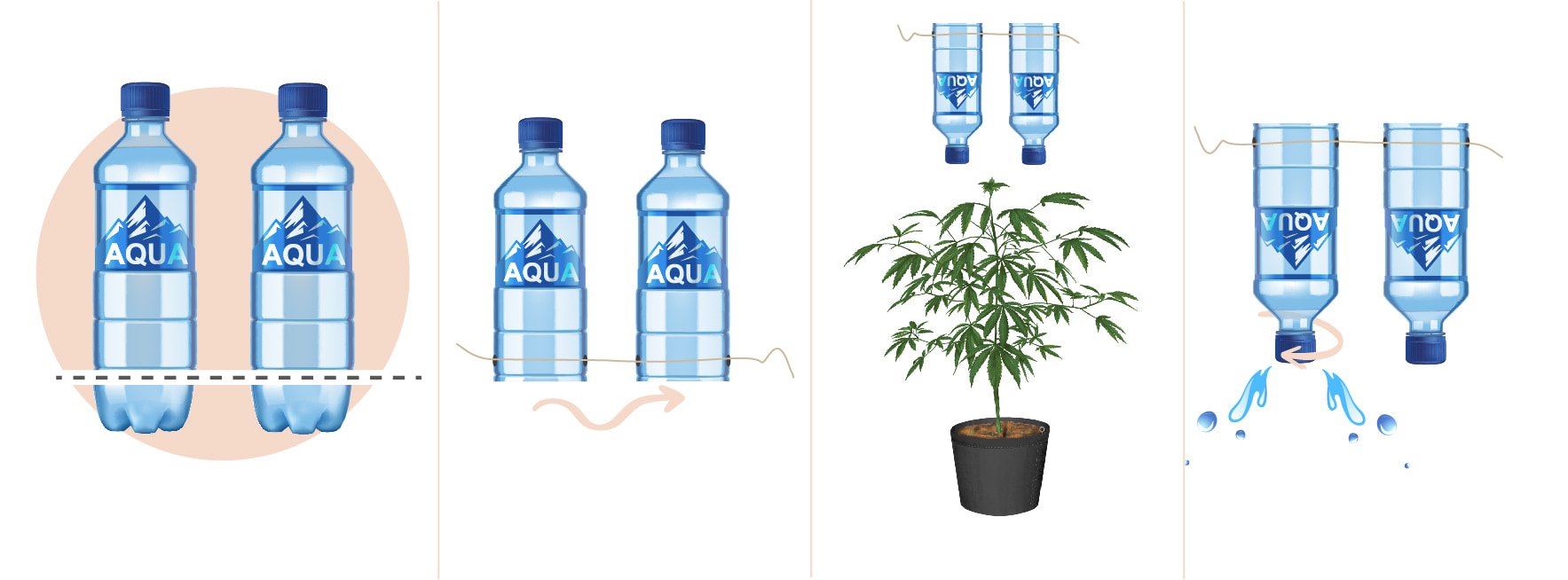
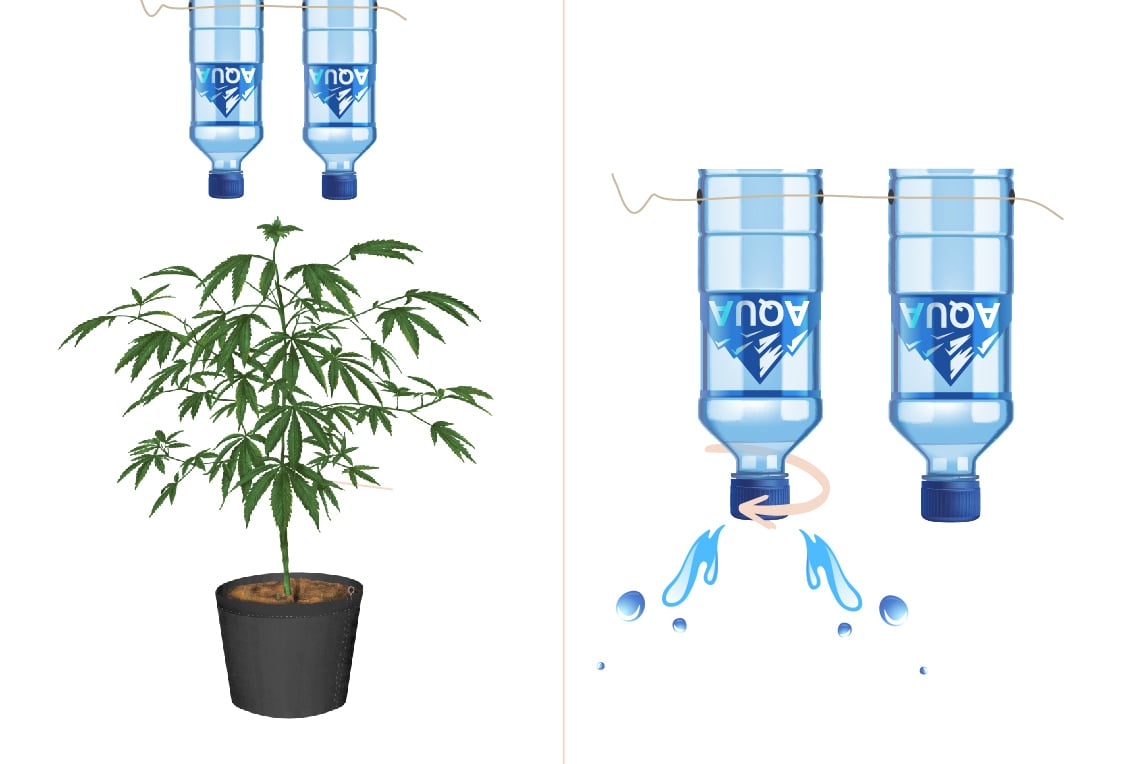
Drip Irrigation vs Hand-Watering
Drip irrigation has some major benefits compared to hand-watering or other agricultural irrigation techniques. Unfortunately, one of the main reasons it still isn’t the norm for cannabis growers is its significant upfront cost. However, if you’re a serious grower with a bit of a budget and long-term growing goals, drip irrigation can seriously cut down on the physical labour it takes to run your garden, while helping you grow healthier plants and produce even better harvests.


























